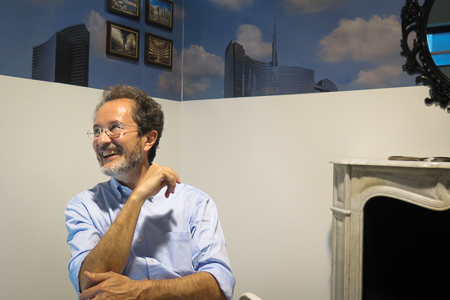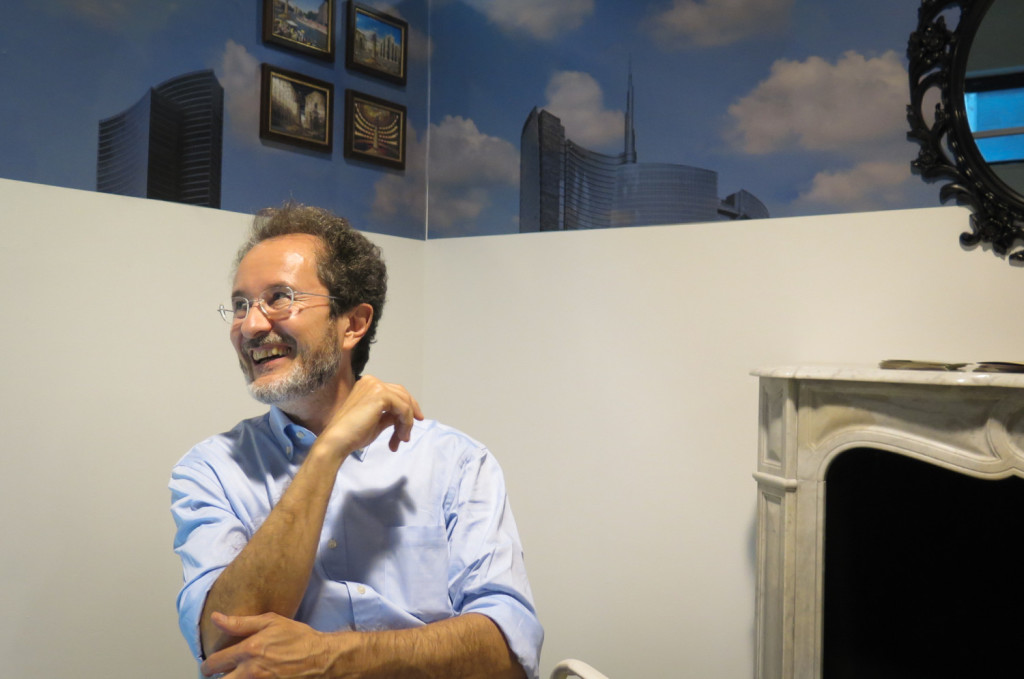Interview with Marco Biraghi taken on the 3rd of June, 2015 at Politecnico di Milano, curated by Luisa Selo. First appeared on 3NTA.
Considering your work online, what is your opinion about the relationship between architecture and the virtual world made on blogs, social media or web magazines? What are good and bad sides?
Internet has enlarged the world of communication in a very fast way with various contents and, at the same time, it has overtaken traditional paper magazines. It has established an apparent democracy allowing for different opinions and points of view – what I believe is a bad side of this aspect. That is a consequence of the freedom of speech, it is the universal equivalence of all these opinions which sometimes seem not to be pondered. Internet has simultaneously enlarged and weakened the information. A structured criticism, which leads to contemplation and then to writing, as it was done previously with the writing of long essays (e.g. Aldo Rossi, Manfredo Tafuri, Massimo Cacciari), is almost disappeared, as only few lines are accepted.
We often deal, with images, points of view or tastes which have difficulties to become an architectural criticism. Considering our website, our main aim is to re-find a critical language and a capacity for analysis, which were typical in certain periods at our school. We also want to adapt them to the contemporaneity with the speed and the immediacy requested nowadays.
What is the reason of the recent large spread of architectural websites? And what do you suggest architecture students should do in order to orientate inside this ‘maze’?
Fifteen years ago the first architecture websites started to surface, they were the virtual copies of paper magazines. Afterwards, the blog became gradually a practice. For instance, regarding our website, it’s always more complicated to ask for contributions. In fact, some time ago publications required certain ambition and effort. However, nowadays it is possible to manage the content of our website publication in house.
It is possible to orientate on the net just with developed knowledge and critical skills that can help to distinguish proper content from superficial appearances. With ‘appearance’ I mean images and repetition of issues already said, which is often happening on the net. However, the paradoxical aspect is that it’s ok anyway: the message resounds, bounces and repeats itself inside this system. There is no map to read this ‘maze’.We still need to consider the individual critical skills, which help us to understand where something ‘to eat’ is. Moreover, there is no use of a map, because the maze is in constant flux.
What are the features of a good student of architecture?
Their critical skills. During my teaching of History of Architecture, I am not interested if a student knows his concepts, dates or information, but what is important is whether he is able to achieve interconnections inside all of this. History is also a critique of the present, it is an amount of different issues that a student should draw the conclusion of. He or she should try to understand it, not just repeat it. The architect needs critical skills as well.
Under this point of view, Politecnico di Milano produced some Italian excellences. You can easily look at Vittorio Gregotti, Aldo Rossi, Guido Canella or Giorgio Grassi’s work, who graduated before ’63; before all the demonstrations which started to surround the history of Politecnico. In fact, they studied with the ‘old professors’ coming from a fascist education (e.g. Piero Portaluppi, Gio Ponti), which were good architects, but not good teachers. Ernesto N. Rogers had great critical skills. He was able to give an interpretation of the phenomena and he was the only one talking about modern architecture during those times whilst the others were still talking about another world of architecture.
Critical skills made that generation, a generation of intellectual architects. They were able to do something more than only perform their duties. They could read the world surrounding them and re-propose it under a designing perspective. Today, we need to give more attention to this kind of professional figure again. And to be good in this, excellence in design studios or in Mathematics does not matter at all. What matters is going to the cinema, reading books, being just curious.
Could you tell me the major differences between the architecture student of your generation and the actual ones?
When I was a university student, there were free regulations which resulted from all the demonstrations and experimentations mentioned before. For instance, it was possible not to attend the scientific courses and since I got the idea of not being an architect but doing what I actually do, I did some of my exams in other universities, outside Politecnico, exams I considered more interesting in relation to my education.
Therefore, the main difference is freedom. But then again, it can be used in a good or bad way. I know people graduated during those years. They didn’t do anything and they got their degree anyway. Freedom means responsibility. The present compulsory studies have some benefits but they take away any individual incentive. In fact, I believe that an equilibrium between the two different realities should be established.
What is Politecnico offering in comparison to other foreign universities?
Politecnico is still offering – despite all the issues said previously – the possibility of formulating reasoning of the project. There is still a legacy indeed, related to that group of architects mentioned before. In fact, a certain ‘school of architecture’ is still existing at our university and is presently forced into an immersion in the historical city under the Italian context. More specifically in Milan, despite it not being the most historical place par excellence, there is still an urge to be in a relationship with the different phenomena.
Things are together in their hybrid, mixed and rich composition.
A student from Politecnico di Milano is able to show his or her Italianism, not in a folkloristic way, but with contemplation about the urban contexts and their evolution. It is indeed, really important to adapt this historical lesson with the contemporaneity. Observing the reality and comparing it with ideas, I think, is the ‘secret formula’.
Is an architecture student of Politecnico once graduated ready for work? What is your advice to a graduate architect looking for a job?
No, he isn’t. This is a limit of this university, but it’s also typical for other Italian universities which are not so pragmatic. It doesn’t mean we need less theory, we need more practice. A good architecture student should be able to put together more talents, considering that a number of Italian architects equals to those in the rest of Europe. I’m not saying that it would be better to stop studying architecture, but I think that the critical consciousness of a student should lead to put together certain skills.
There is a standard course of study determined by the study plan, and there is also an individual knowledge, which individual builds by himself. With this kind of interaction, unpredictable things can happen. This ‘short circuit’ is definitely positive since it is showing an interest and enthusiasm for the subject. The classic figure of a diligent student, without a personality, is not useful to anyone.
Can you describe in two adjectives the Expo, and tell me the reason of your choice?
I’m not critical about the Expo. It is what it is: a big exposition for people. If you want to see some culture, other places would be more appropriate, let’s say a museum or the Venice Biennale. Therefore, I think it’s doing its job, despite all the weaknesses of the general system and single pavilions. In fact, it’s very rare that we got some masterpieces out of world expositions. We’re dealing with ephemeral architecture that will end up soon. It’ll be gone physically as well as gone in our memory.
But that’s ok. There is always something in history which is forgotten. It is an event to be consumed. Furthermore, the main topic, food, belongs to this philosophy. We are just consuming it and expelling it.
13th of July, 2015.

